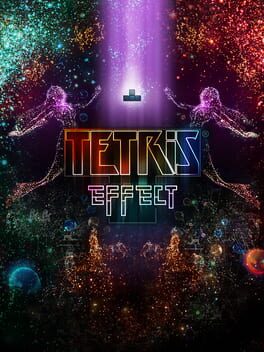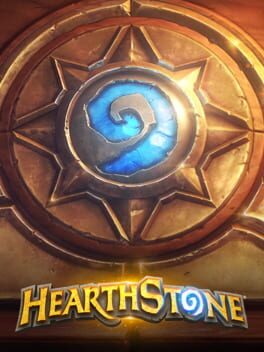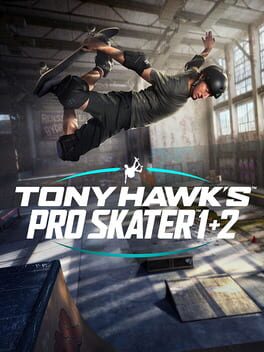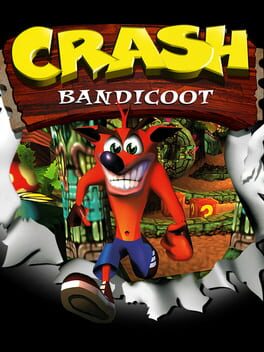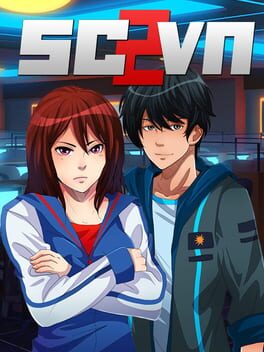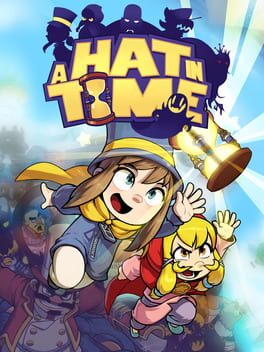synthezoid
This is one of the only single player games I've played to provide more than 100 hours of content (with the expansions) and have every minute of those hours feel justified. Even the side quests feel uniquely planned and cared for, like a labor of love or a second-born child. Choices can have long-term, weighty consequences. Every area in the game feels thought-out and crafted to a degree that some entire games never reach. The Witcher 3 is a rare accomplishment in RPGs, in storytelling, in games--one which occupies our time without wasting it, and one which reminds us that 'breadth' and 'depth' don't have to be antonyms. Bigger isn't always better, but it isn't always worse, either.
2018
2011
El Shaddai: Ascension of the Metatron is a criminally overlooked and underappreciated gem helmed by director Sawaki Takeyasu, previously a character designer and artist for games like Devil May Cry. While its slightly simpler combat mechanics might feel like a step back for fans of the complexity and intensity of that series, El Shaddai toes the line by providing a sense of novelty and wonder with every level and a colorful, ever-changing world of utter unreality befitting its bizarre apocryphal religious theme. Being ordered around by Lucifer himself on a cell phone will feel like the least unusual thing you've been through by the end of its brisk playtime, and for that feeling alone, it's one of the most memorable experiences I've ever had with a game.
2014
A deeply flawed competitive strategy game, but a monumental work of game feel. I still come back to play it on rare occasions, despite its lack of depth relative to other CCGs, its high degree of luck, and its truly horrendous efforts to take my money, because the presentation, setting, and polish allow it to punch well above its weight. Even the simplest of plays can feel more satisfying and impactful than some moments of deep strategy and difficult choicemaking in other card games.
One of the best parts of playing a collectible card game is the tactile feel of rifling through a hand of cards, of your deck mashing together as you shuffle, of sliding sleeved cards across your textured playmat. Instead of slavishly simulating the mechanics of a real card game, Hearthstone offers the basic beats of playing a CCG alongside enough audiovisual spectacle to make up for all those lost physical sensations.
One of the best parts of playing a collectible card game is the tactile feel of rifling through a hand of cards, of your deck mashing together as you shuffle, of sliding sleeved cards across your textured playmat. Instead of slavishly simulating the mechanics of a real card game, Hearthstone offers the basic beats of playing a CCG alongside enough audiovisual spectacle to make up for all those lost physical sensations.
2016
Kind of like Dark Souls 1 with that game's rough edges smoothed over. In the process, it also smooths over the looping, interconnected world for something a bit more linear (but branching), but who cares? It's the most polished--and the most fun--Dark Souls has ever been, and it offers combat that is faster, more fluid, and more exciting to boot.
Dark Souls III is as DARK and HARD and GROSS and GRIM and DIM as ever, but also unapologetically beautiful. The first time I stepped into Irythill, I got a little emotional. The first time I got lost in the marshy swamps of Farron Keep, I felt a manic excitement more intense than anything else Dark Souls had thrown at me prior. This game is Dark Souls at its most refined, devoid of all the halting friction that marks DS1's low points. Maybe it's not fair to write this review in such a comparative tone, but the fact is that Dark Souls 1 is already one of the most singular and impressive games I've ever played... and this one is better. I feel that's more enlightening than any futile attempt at an independent, objective look at a game that could never exist in a vacuum anyway.
Dark Souls III is as DARK and HARD and GROSS and GRIM and DIM as ever, but also unapologetically beautiful. The first time I stepped into Irythill, I got a little emotional. The first time I got lost in the marshy swamps of Farron Keep, I felt a manic excitement more intense than anything else Dark Souls had thrown at me prior. This game is Dark Souls at its most refined, devoid of all the halting friction that marks DS1's low points. Maybe it's not fair to write this review in such a comparative tone, but the fact is that Dark Souls 1 is already one of the most singular and impressive games I've ever played... and this one is better. I feel that's more enlightening than any futile attempt at an independent, objective look at a game that could never exist in a vacuum anyway.
2018
Really just the first half of the DLC story, but a solid first half. Starts introducing more options and powers, including some more nonlethal avenues. Brigmore Witches sees this through even further, making the DLC rival--and likely surpass--the already solid main campaign. Based on the constant improvement in this game and the massive success of their later Prey, I'm very excited to see how Dishonored 2 develops the gameplay they were starting to refine with the first Dishonored.
1996
All time great level design (except for moments like Gusty Glade's baffling required leap of faith or that part in Castle Crush with the FOUR hedgehogs, which I didn't know at the time you could roll into--they're literally covered in spikes!--yes, I'm still mad), all time garbage lives system. Maybe I'm not great at the game (I'm not), but consider that some of my favorite levels were still some of the most challenging ones; they just happened to also give you access to a save point before playing them, which made the challenge exciting rather than exhausting. Replaying a level you've already thoroughly mastered just to get to the one you haven't is rarely, if ever, fun. Unless you're willing to compromise the developer's "intended experience" by using save states if you're playing on a modern platform (which you should, seriously), this severely bogs down what should be some of the most thrilling and engaging parts of the game. I appreciate a good challenge, but the tedious save system in conjunction with levels which demand either trial-and-error repetition or more precision than this game's sometimes-sketchy hitboxes and tight camera allow make it a more tiring, frustrating experience than its streamlined predecessor.
Still, most of the early worlds, before the stingy save system gets so brutal as to be frustrating, and the last few levels, where you rarely need to play many in a row without saving, are truly intense and massively rewarding in a way that few platformers ever accomplish. Rare was even kind enough to include the surprisingly easy Toxic Tower right near the end as a token of gratitude for making it that far. When it's at its best, Diddy's Kong Quest promises to be an even better game than DKC1. It doesn't quite see that through, but I appreciate it all the more for trying.
Still, most of the early worlds, before the stingy save system gets so brutal as to be frustrating, and the last few levels, where you rarely need to play many in a row without saving, are truly intense and massively rewarding in a way that few platformers ever accomplish. Rare was even kind enough to include the surprisingly easy Toxic Tower right near the end as a token of gratitude for making it that far. When it's at its best, Diddy's Kong Quest promises to be an even better game than DKC1. It doesn't quite see that through, but I appreciate it all the more for trying.
2015
A decent roguelite twin-stick bullet hell shooter let down by a nauseating 30fps lock and difficulty curve that just feels a bit more punishing and intense than I'd like for a game that demands such precise twitch reactions. Maybe I'd get used to it if it ran at 60fps, though, but come on. It's an obnoxious oversight for such a fast, frantic game. I know making a game is unbelievably hard work, and I know Game Maker makes it a ridiculous pain to convert a game to a new framerate, but it strikes me as a lack of care and polish, especially when dedicated developers like Heart Machine showed that it's possible--and entirely worth it--to make the conversion with Hyper Light Drifter. Anyway, as far as action roguelites go, I'd sooner play another one anyway, framerate be damned.
edit: apparently this got fixed a couple years back. I'll probably try it again someday
edit: apparently this got fixed a couple years back. I'll probably try it again someday
2017
1996
It's like 75% of the way to being as good as I wish it was, but a few concerns hold it back.
The controls, while incredibly refined for a first effort, still have their quirks compared to later games. For example: why does Mario sometimes walk in an arc instead of turning around in place? When the controls work as intended, it feels amazing to long jump around 64's levels, but if you've experienced the immaculate game feel of Sunshine or Odyssey, this game can occasionally feel like a step back, even if only a small one.
While it has a greater level of completeness and polish to its mission design than Sunshine, I still feel like a few too many stars are janky or less interesting, particularly cannon stars, the wing cap, and anything to do with swimming.
Its structure that lets you grab almost any star on a particular level is nice and does a better job of encouraging exploration than the more restrictive shines in Sunshine, but the way it kicks you out after grabbing just one still discourages you from actually exploring beyond a single path each time you enter. Not to mention that starting from the same position every time only serves to accentuate how samey some stars feel. (Thank god for Odyssey's moon madness--that game's structure feels like an antidote to all the ills of past collectathons.)
Lastly, the music, while largely unforgettable, is unfortunately limited by the N64's storage space to be repeated across numerous stages. In my dreams, I see a Spyro Reignited-style remaster of SM64 that offers alternate orchestrations of the same song for each level, or something like that, but alas.
In spite of these gripes, it's still a benchmark 3D platformer and a blast to jump, kick, and dive around in--arguably more so than some of the series' later entries. (If you're able to Completely Legally back up your own ROM of this game, try the decompilation team's PC port which offers slightly improved camera control, can upscale to any resolution, and runs at 60fps. Why couldn't Nintendo get this game running at 60fps when they re-released it almost 25 years later?)
Best world: Rainbow Ride
The controls, while incredibly refined for a first effort, still have their quirks compared to later games. For example: why does Mario sometimes walk in an arc instead of turning around in place? When the controls work as intended, it feels amazing to long jump around 64's levels, but if you've experienced the immaculate game feel of Sunshine or Odyssey, this game can occasionally feel like a step back, even if only a small one.
While it has a greater level of completeness and polish to its mission design than Sunshine, I still feel like a few too many stars are janky or less interesting, particularly cannon stars, the wing cap, and anything to do with swimming.
Its structure that lets you grab almost any star on a particular level is nice and does a better job of encouraging exploration than the more restrictive shines in Sunshine, but the way it kicks you out after grabbing just one still discourages you from actually exploring beyond a single path each time you enter. Not to mention that starting from the same position every time only serves to accentuate how samey some stars feel. (Thank god for Odyssey's moon madness--that game's structure feels like an antidote to all the ills of past collectathons.)
Lastly, the music, while largely unforgettable, is unfortunately limited by the N64's storage space to be repeated across numerous stages. In my dreams, I see a Spyro Reignited-style remaster of SM64 that offers alternate orchestrations of the same song for each level, or something like that, but alas.
In spite of these gripes, it's still a benchmark 3D platformer and a blast to jump, kick, and dive around in--arguably more so than some of the series' later entries. (If you're able to Completely Legally back up your own ROM of this game, try the decompilation team's PC port which offers slightly improved camera control, can upscale to any resolution, and runs at 60fps. Why couldn't Nintendo get this game running at 60fps when they re-released it almost 25 years later?)
Best world: Rainbow Ride

